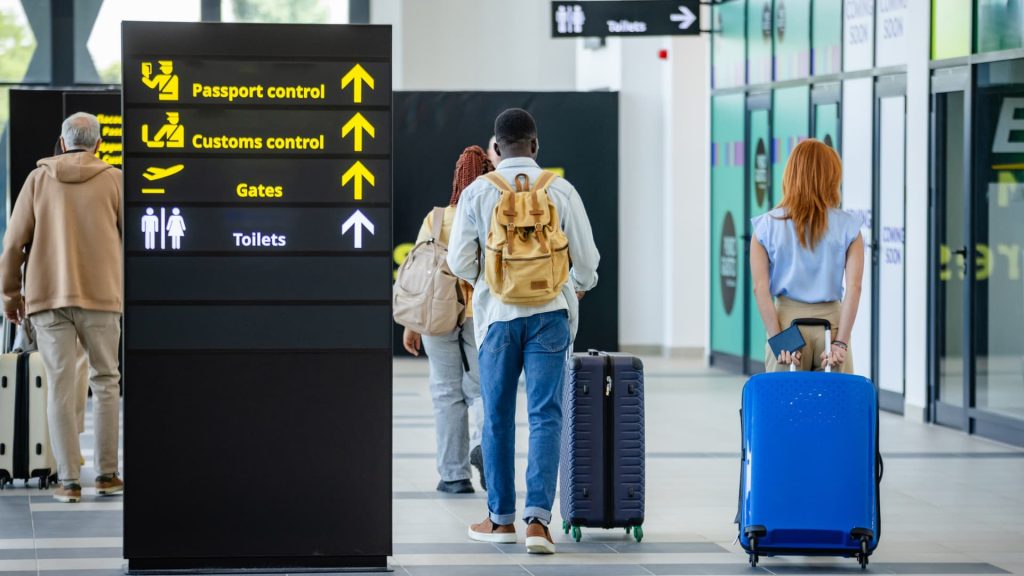Spending from international visitors to the United States is projected to decline by approximately $8.5 billion this year. This decrease is attributed to negative perceptions surrounding U.S. trade and immigration policies that are driving overseas tourists to consider alternative destinations. According to recent findings published by Oxford Economics, international arrivals to the U.S. are expected to drop by nearly 9%, significantly impacting businesses that rely on foreign tourism for revenue.
| Article Subheadings |
|---|
| 1) Understanding the Decline in Foreign Spending |
| 2) Factors Influencing International Arrivals |
| 3) The Role of Traveler Sentiment |
| 4) Economic Implications of the Decline |
| 5) Looking Ahead: Projections for the Future |
Understanding the Decline in Foreign Spending
The anticipated decrease in spending from foreign tourists to the United States is significant, amounting to an estimated $8.5 billion drop from last year. This statistic represents a decline of roughly 5%, a trend that could disrupt various sectors dependent on international visits. With less foot traffic expected, businesses, especially those in tourism-heavy regions, could face considerable challenges. As noted by Aran Ryan, director of industry studies at Tourism Economics, “less international arrivals equate to less economic activity, especially in communities that rely on visitor spending.”
Factors Influencing International Arrivals
Several factors contribute to the decline in international visitors. Chiefly, the perception of U.S. policies—particularly those enacted during the previous administration—has created an atmosphere of uncertainty. According to Ryan, flight bookings to the U.S. for the period between May and July were down 11% year over year, indicating a negative sentiment about travel to the country. European and Canadian travelers appear to be particularly hesitant, with air bookings for these regions trailing behind by more than 10% and 33%, respectively.
The Role of Traveler Sentiment
As the tourism industry observes declining numbers, traveler sentiment has emerged as a pivotal factor in the decision-making process for potential visitors. Concerns about heightened security measures and the treatment of foreign nationals have fueled apprehension.
“Whether fair or not, a perception is taking hold that more people are being detained, more devices are being searched and legal travelers are being deported back to their origin country,”
stated Geoff Freeman, president and CEO of the U.S. Travel Association. Such views significantly affect how travelers perceive the U.S. as a destination.
Economic Implications of the Decline
The economic repercussions of this decline are extensive. The World Travel & Tourism Council has projected a staggering economic loss of $12.5 billion by the year 2025, highlighting the broader implications for communities, jobs, and businesses nationwide. This forecast underscores the importance of international tourism to the U.S. economy, as diminished spending impacts not just the hospitality industry, but also retail, entertainment, and numerous ancillary sectors.
Looking Ahead: Projections for the Future
In a hopeful note, Oxford Economics had previously expected around 9% growth in international arrivals and a 16% increase in spending by the year 2025. However, these projections are increasingly uncertain in light of prevailing negative sentiments. Companies that rely heavily on foreign tourism may need to strategize on how to adapt to changing perceptions and explore alternatives to mitigate potential losses.
| No. | Key Points |
|---|---|
| 1 | Spending by foreign visitors is projected to decline by $8.5 billion in 2023. |
| 2 | International arrivals to the U.S. are expected to fall by 9% this year. |
| 3 | Negative perceptions due to U.S. trade and immigration policies are influencing traveler decisions. |
| 4 | Economic losses for the U.S. could reach $12.5 billion by 2025. |
| 5 | Traveler sentiment is a crucial factor affecting tourism trends. |
Summary
The projected decline in spending from foreign visitors to the U.S. reveals a significant challenge for the tourism sector. With concerns about national policies influencing perceptions, international arrivals are expected to drop considerably in the coming years. The economic ramifications of such developments underscore the need for a reassessment of tourism strategies to foster a more welcoming atmosphere for global travelers.
Frequently Asked Questions
Question: What is the projected decline in spending from international visitors to the U.S.?
The spending from foreign visitors is expected to decrease by approximately $8.5 billion in 2023.
Question: What factors are contributing to the decline in international arrivals?
Factors include negative perceptions arising from U.S. trade and immigration policies, leading to decreased flight bookings to the country.
Question: What are the economic implications of this decline?
Economic losses projected for the U.S. may reach $12.5 billion by 2025, affecting numerous sectors reliant on foreign tourism.
